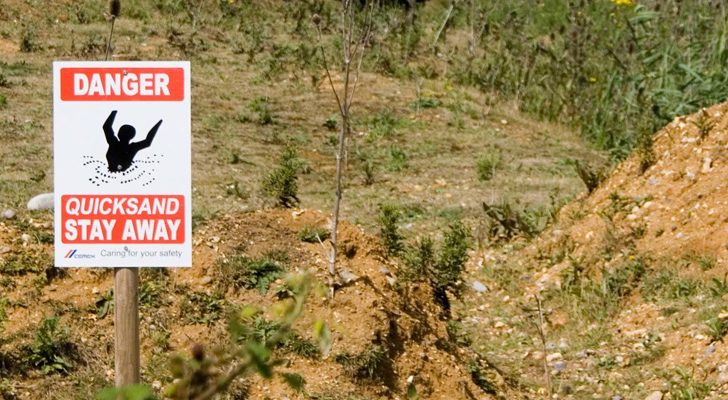Children’s Corner
Quicksand is created when water is trapped in sand or marshy earth, thus creating a soil that is halfway between a solid and a liquid. Although the name quicksand would indicate it is in fact created with sand, it can be any mass of clay or dirt particles that contain trapped water. But how can we learn more about it, while not getting too close? A lot can be learned from a certain terror found at some beaches, bogs and riverbanks. It’s a life-threatening natural phenomenon that has been portrayed in a huge number of films but is not completely understood by many.
There’s no better way to understand quicksand than by making it yourself. Although it has been depicted as unrealistically being able to swallow people in seconds, generally it is too dense for this to happen.
This doesn’t mean it’s not dangerous. Quicksand is a master of disguise, it can look completely solid when undisturbed, which makes it easy for people to stumble right into it.
In order to understand how to save yourself if this happens, the best thing to do is study your own homemade quicksand– which is very easy to make.
Ingredients:
-1 cup of maize cornflour
-Half a cup of water
-A large plastic container
-A spoon
If you add just the right amount of water to cornflour it becomes very thick when you stir it quickly. This happens because the cornflour grains can’t slide over each other due to the lack of water between them. Stirring slowly allows more water between the cornflour grains, letting them slide over each other much easier.
Poking it quickly has the same effect, making the substance very hard. If you poke it slowly your finger can enter your quicksand easily. It works the same way as real quicksand.
Much can be learned from this. Many people who unknowingly walk right into quicksand panic, and make harsh movements in order to get out, this will cause the substance to act as a solid. Slow and steady movements are the best way of manoeuvring in quicksand, as it allows water to mix more easily with the sand or dirt particles.
Removing excess weight will stop you sinking faster. Although it is unlikely you’ll sink all the way, as the human body is generally not as dense as quicksand, becoming trapped can lead to hypothermia or sunstroke – depending on the climate – or starvation.
Back float your way out, don’t back stroke your way out. Keep your arm movements controlled, small, and close to your core to avoid further liquefying the quicksand. And whatever you do, don’t try to float out on your stomach! This increases the danger of getting your head stuck below quicksand.


 Chai Brady
Chai Brady
